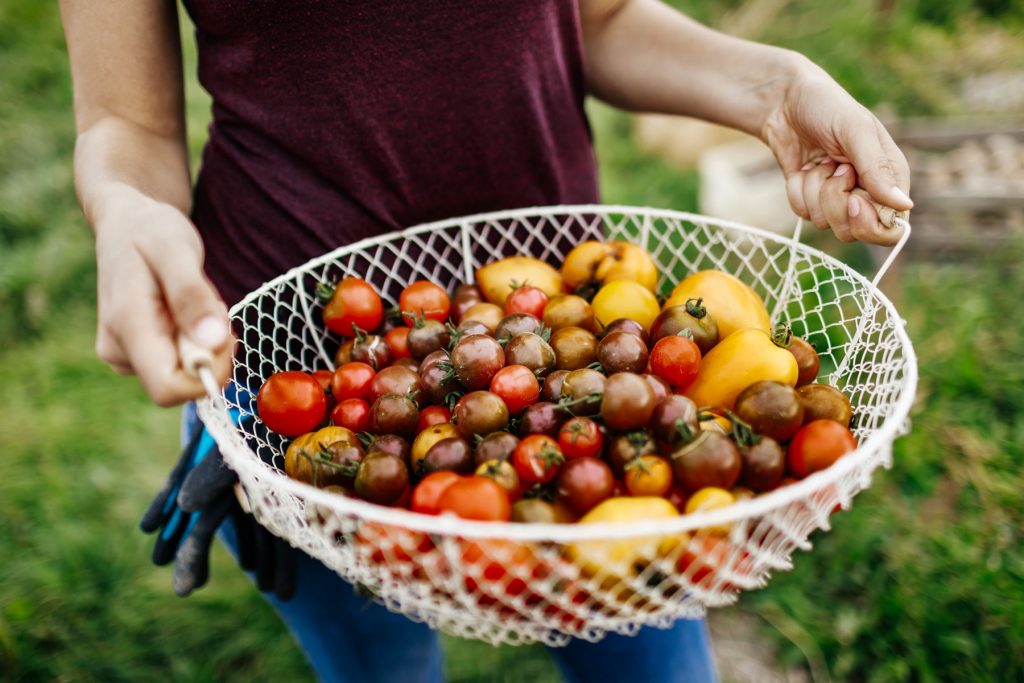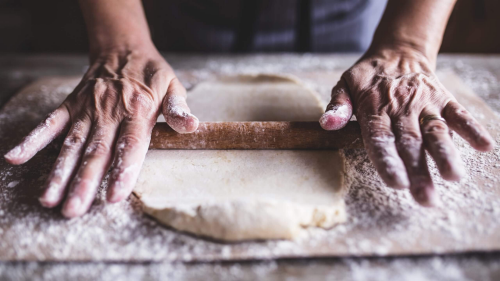
You may have heard of heirloom plants and wondered what makes them special. Debate persists over the precise definition of an heirloom plant, but in general it refers to non-hybrid varieties dating before World War II. As the “heirloom” moniker implies, these plants hail from bygone eras. But age isn’t all that makes an heirloom plant unique; branch out in the garden by choosing some new-to-you heirloom plants.
HEIRLOOMS AND HYBRIDS: THE BOTANY BACKSTORY BEGINS WITH A SEED
Every plant begins with a seed, and all plants require pollination to produce new seeds. Heirloom plants are open-pollinated, which means that wind or insects do the work of pollination, physically moving pollen from plant to plant. Hybrid plants are cross-pollinated by humans to favor a specific trait, such as a perfectly round fruit or vegetable, a new color variation or better disease resistance.
“Hybrid” isn’t the same thing as “genetically modified,” or GMO, by the way. Hybrid plants have occurred in the wild for millenia; in recent centuries, humans simply figured out how to cultivate them for our own purposes.


HEIRLOOMS OR HYBRIDS: WHICH IS BEST FOR YOUR GARDEN?
A distinct advantage of open-pollinated heirloom plants is that unlike cross-pollinated hybrids, their seeds will grow the exact same plants the next season. This is how heirloom plants preserve their genetic legacy. In addition to allowing history to repeat itself by harvesting heirloom seeds, some gardeners choose heirloom seeds to preserve genetic diversity in our food system.
By the way, you can safely grow and consume hybrids along with heirloom plants in your garden — and both can be grown organically. Choosing heirlooms is more a matter of preserving local botanical varieties and their lore, along with a sense of feeling closer to nature and producing more flavorful and unique results. Hybrid plants are often hardier and have better disease resistance, making them easier to grow.


WHAT’S IN A NAME? HEIRLOOM PLANTS CONNECT STORIES TO A SENSE OF PLACE
Another vital aspect of heirloom plants centers around their history more than how they are pollinated. Traditionally, heirloom seeds were established in a given region and handed down among family members and neighbors, adding historic heft to the phrase “locally grown.” Sometimes there are interesting stories behind an heirloom plant’s name, such as the “Mortgage Lifter” tomato, cultivated by a Virginia mechanic in the 1930s who used the sale of his tomatoes to pay off his mortgage.
If you’re looking to grow heirloom produce or flowers of your own, farmers markets are an excellent place to start, because growers there often know which heirloom plants grow well locally. These growers sometimes also sell the seeds they collect each season. Seed catalogs are another great resource, but again keep in mind that heirloom varieties that thrive in your region are your best bet. Fedco Seeds in Maine and Baker Creek Rare Seeds are two companies offering heirloom seeds along with the stories behind their origins.

WHY YOU SHOULD GROW HEIRLOOM PLANTS IN YOUR GARDEN
File this one under “je ne sais quoi,” but many gardeners swear by the exceptional flavor of heirloom vegetables. There’s also something appealing about the offbeat aesthetic of tomatoes that grow in myriad shapes, sizes and colors. They evoke a homegrown quality seldom found amid the hybridized uniformity of a grocery store produce aisle. For this reason, many gardeners and cooks value heirlooms for their uniqueness and the feeling of being closer to the way nature intended.
Related Articles
-
 Food & Drink March 16, 2020 | 5 min read Going Rogue in the Kitchen Eventually, I did what most people do when they’re feeling confident in the kitchen. I whipped up a pot of homemade soup without any instructions.
Food & Drink March 16, 2020 | 5 min read Going Rogue in the Kitchen Eventually, I did what most people do when they’re feeling confident in the kitchen. I whipped up a pot of homemade soup without any instructions. -
 Food & Drink March 16, 2020 | 6 min read Delicious Differences: Potatoes Mashed potatoes. Fried potatoes. Hash browns. Baked potatoes. The list goes on for all the ways you can prepare potatoes in the kitchen.
Food & Drink March 16, 2020 | 6 min read Delicious Differences: Potatoes Mashed potatoes. Fried potatoes. Hash browns. Baked potatoes. The list goes on for all the ways you can prepare potatoes in the kitchen. -
 Food & Drink June 11, 2020 | 6 min read Food Traditions Family traditions don’t always have rhyme or reason, but they give us something to look forward to, and remind us to be grateful.
Food & Drink June 11, 2020 | 6 min read Food Traditions Family traditions don’t always have rhyme or reason, but they give us something to look forward to, and remind us to be grateful.